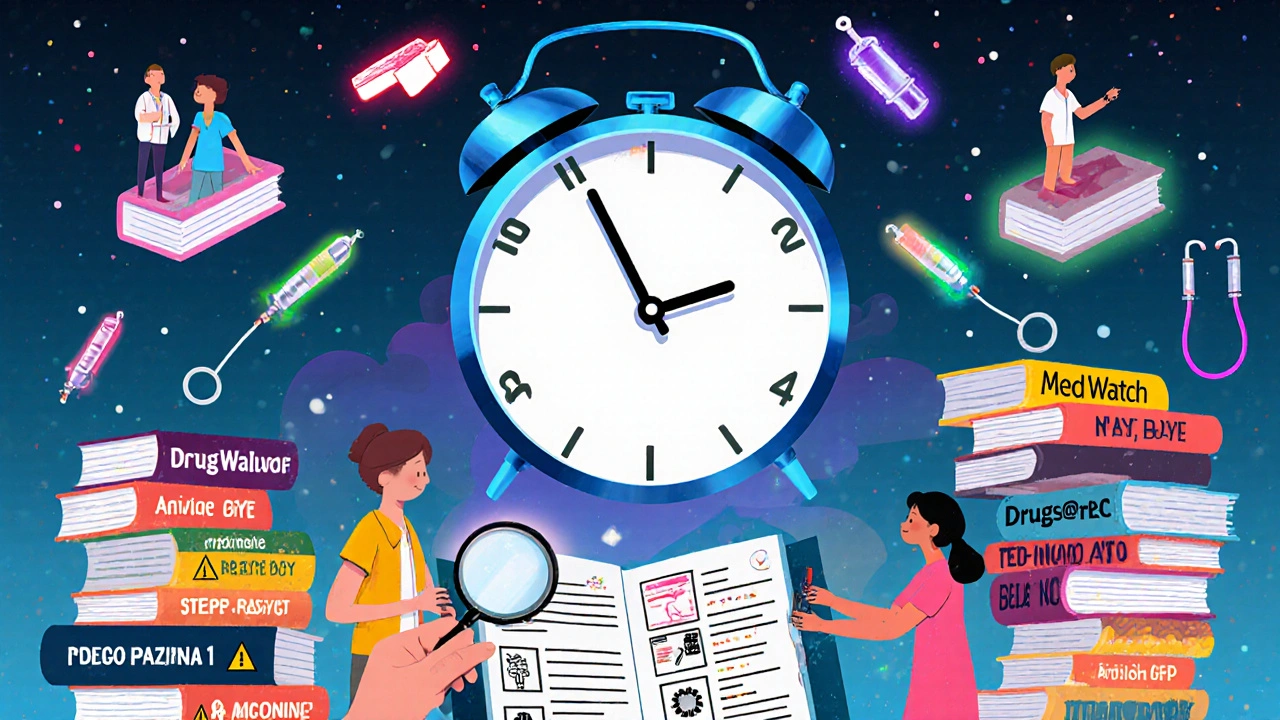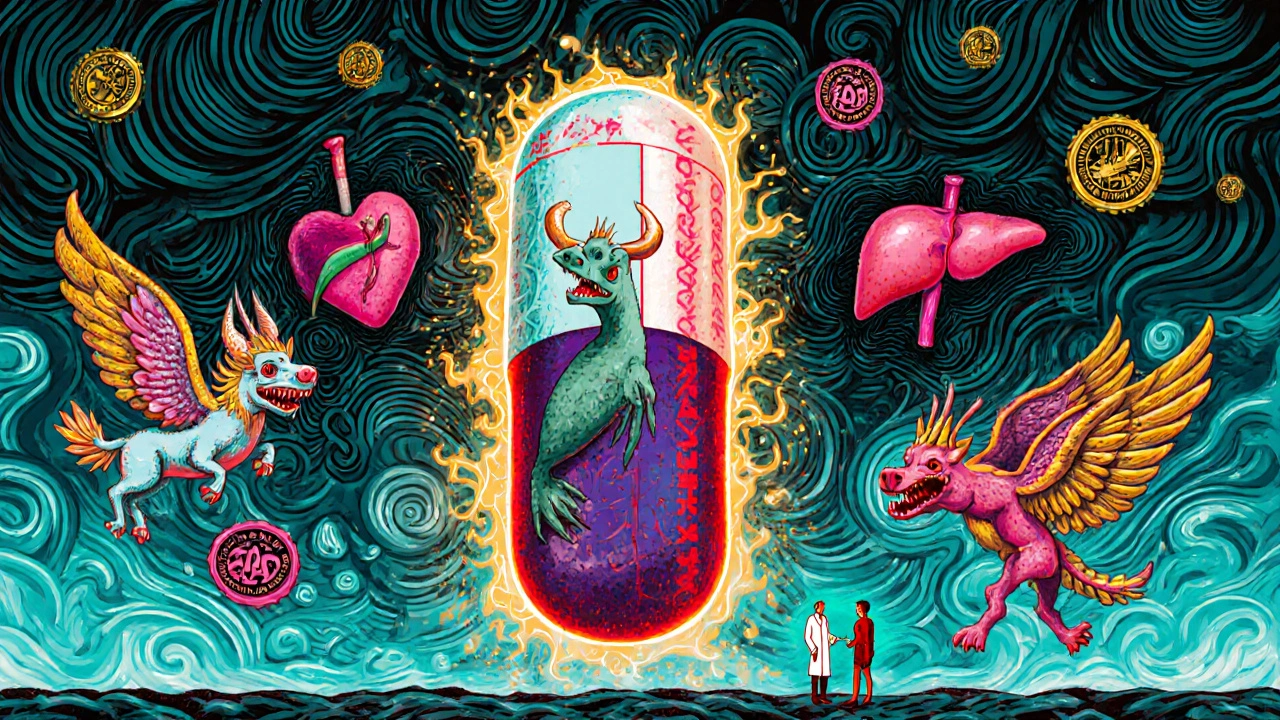What Is a Boxed Warning, Really?
A boxed warning-sometimes called a black box warning-is the strongest safety alert the U.S. Food and Drug Administration (FDA) can require on a prescription drug label. It’s not just a footnote. It’s a bold, bordered box at the very top of the prescribing information, meant to grab the attention of doctors, pharmacists, and patients. These warnings aren’t for mild side effects like headaches or nausea. They’re for risks that can cause death, hospitalization, or permanent harm. Think heart failure, suicidal behavior, liver damage, or sudden loss of white blood cells. The FDA started requiring them in 1979, and since then, they’ve become one of the most important tools for tracking drug safety after a medicine hits the market.
Why Do These Warnings Change?
Drugs don’t come with a complete safety manual when they’re first approved. Clinical trials involve thousands of people, but not millions. Rare side effects, long-term consequences, or risks in specific groups-like teens, elderly patients, or those with other health conditions-often only show up after the drug is used widely. That’s when real-world data kicks in. When doctors report serious problems through the FDA’s MedWatch system, or when new studies reveal patterns, the FDA reevaluates the label. Between 2008 and 2015, about one-third of all boxed warning updates weren’t brand new-they were upgrades to existing ones. For example, the warning for antidepressants in young people was expanded in 2006 to include adults aged 18 to 24, not just children. That wasn’t a mistake; it was new evidence.
How to Spot the Difference Between Old and New Warnings
Older boxed warnings often used vague language: "risk of serious side effects," "may cause harm." Modern warnings are precise. Look for numbers. Take Clozaril, a drug used for treatment-resistant schizophrenia. In 2025, its boxed warning now says: "Myocarditis incidence is 0.84 cases per 1,000 patient-years compared to 0.12 in non-clozapine antipsychotics." That’s not guesswork. That’s data. You’ll also see specific populations called out: "in patients with pre-existing heart disease," "during the first four weeks of treatment." Even the wording changes. In 2017, the warning for Unituxin switched from "neuropathy" to "neurotoxicity"-a more accurate term that reflects how the drug damages nerves, not just causes numbness. These aren’t cosmetic tweaks. They’re clinical upgrades.

What Drives These Updates?
Three things: new data, new patients, and new scrutiny. The number of drugs approved through fast-track programs like Breakthrough Therapy has risen sharply since 2012. These drugs get to market faster, but with less long-term safety data. As a result, 34.1% of drugs approved under these pathways later received boxed warnings-compared to just 22.7% of standard approvals. That doesn’t mean they’re unsafe. It means we’re learning more after they’re used by real people. Also, the FDA now has better tools to track outcomes. Electronic health records, pharmacy databases, and patient registries give them real-time signals. The median time between a drug’s approval and its first boxed warning used to be around 7 years. Now it’s closer to 11. That’s not because safety is worse-it’s because we’re looking harder.
How to Track Changes Yourself
You don’t need to wait for your doctor to tell you about a warning update. The FDA makes all this public. Go to their Drug Safety-related Labeling Changes (SrLC) database. It’s free, searchable, and updated every quarter. It includes every boxed warning change since January 2016. For older changes, check the MedWatch archive. If you’re a healthcare provider, the American Journal of Health-System Pharmacy publishes quarterly summaries of all labeling changes. For example, the April-June 2025 issue listed 17 boxed warning updates across 14 drugs. You can also use Drugs@FDA to see the full approval history of any drug, including all label revisions. Don’t rely on apps or websites that aren’t FDA-linked. Only official sources guarantee accuracy.
Why Some Warnings Disappear
It sounds counterintuitive, but boxed warnings can be removed. That doesn’t mean the drug is suddenly safe. It means the evidence changed. Take Chantix, the smoking cessation drug. In 2009, it got a boxed warning about depression and suicidal thoughts. By 2016, a massive study of over 8,000 people found no higher rate of these events compared to placebo. The FDA removed the warning. That’s how the system is supposed to work: evidence drives decisions, not fear. The same thing happened with some early warnings on certain epilepsy drugs-later studies showed the risk was overstated. Removal is rare, but it happens. When it does, it’s a sign the system is working.

What Happens When Warnings Are Ignored?
Studies show only about 61% of boxed warnings lead to real changes in how doctors prescribe. Why? Because they’re overwhelming. A 2017 study found only 43.6% of primary care doctors could correctly identify which drugs had boxed warnings during a patient visit. Family doctors, who see the most patients, were even less likely to spot them. Some warnings are too broad: "risk of liver damage" applies to dozens of drugs. Clinicians start tuning them out. But the most effective warnings are the ones with clear actions: "Check liver enzymes monthly," "Avoid in patients with QT prolongation," "Mandatory blood counts every week for first 18 weeks." These are the ones that save lives. For drugs like clozapine and pimozide, pharmacists routinely double-check that monitoring is in place before dispensing. That’s how you know a warning is working.
What’s Next for Boxed Warnings?
The FDA is testing real-time warning updates. Imagine a system that flags a sudden spike in heart inflammation cases linked to a drug-based on hospital records-and automatically sends a label update within weeks, not years. Pilot programs are already underway. By 2027, the goal is to cut the current 18- to 24-month delay between safety signals and label changes. Industry analysts predict that by 2030, nearly half of all prescription drugs will carry a boxed warning. That sounds scary, but it’s not. It means we’re getting better at spotting risks early. The future isn’t fewer warnings-it’s smarter, more precise ones. Less noise. More clarity.
What Should You Do as a Patient or Caregiver?
If you’re taking a medication with a boxed warning, don’t panic. Don’t stop taking it without talking to your doctor. But do ask: "Has this warning changed since I started?" and "What specific signs should I watch for?" Keep a list of your medications and their warnings. If you see a new warning in the news or from your pharmacist, bring it up at your next appointment. Pharmacists are trained to catch these changes and can explain what they mean for your treatment. If you’re a caregiver for someone on a high-risk drug like clozapine or Depo-Provera, make sure monitoring-like blood tests or heart scans-is happening on schedule. The warning isn’t a stop sign. It’s a guide to safer use.

Sammy Williams
November 21, 2025 AT 22:31jim cerqua
November 23, 2025 AT 21:15Florian Moser
November 24, 2025 AT 10:37Donald Frantz
November 24, 2025 AT 19:06Julia Strothers
November 25, 2025 AT 21:50Erika Sta. Maria
November 27, 2025 AT 11:45Nikhil Purohit
November 27, 2025 AT 23:58Debanjan Banerjee
November 29, 2025 AT 12:13Steve Harris
November 30, 2025 AT 03:23Michael Marrale
December 1, 2025 AT 02:24David vaughan
December 2, 2025 AT 00:05David Cusack
December 2, 2025 AT 22:39Elaina Cronin
December 4, 2025 AT 17:34